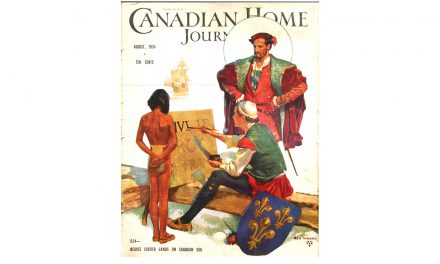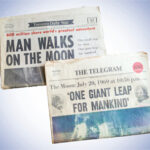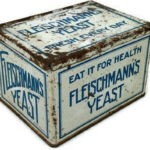Typography
in this advertisement makes it unreadable
There are a dozen ancient typefaces in this full-page Yellow Pages advertisement that appeared in Printers’ Ink, the magazine of advertising and marketing management. A different typeface is used on every line. Almost every word is capitalized. A 5‑year-old child could do a better job with a kid’s printing set.

Staff at the advertising agency probably thought it was brilliant —the art director, the copywriter, and the account executive. The advertising manager at Yellow Pages obviously thought that it was brilliant. They all agreed to buy space in Printers’ Ink to invite other agencies and other advertising managers to spend their campaign dollars in the Yellow Pages.
Good copywriters and art directors use one or two typefaces throughout, for esthetic reasons and because an ad with few typeface changes looks more homogenous, less busy, less distracting.
And they know not to print text over colour because it is harder to read. The type in this Yellow Pages advertisement is almost illegible with its dirty yellow type on an even dirtier brown page.
In the bottom right corner there is a coupon that will get the reader a Yellow Pages National Usage Survey conducted by Audits & Surveys Co., Inc.. Once again good typography has been thrown out the window. The copy appears to be set in 7pt with 2pt leading.
The coupon is on the gutter side of page with the result that the page will have to be torn out of the magazine to permit the coupon to be cut out for completion and mailing.

Was this ad for Yellow Pages intended to be humorous? This advertisement could not have been an award-winner.
What is typography?
Typography is the design and manufacture, the art and technique of using type to achieve readability. It is a science: It has rules that must be understood and applied with creative freshness if the designer is to communicate productively in web design or print design.
The first of these rules is readability. Any attempt at communications is a terrible waste of time, money, effort, and material if it is not read or understood.
Readability begins with type selection and display. There are sans and serifs and scripts. Type can be light or heavy, graceful or ugly, fat or thin, decorative or plain, formal or novelty. The profusion of typefaces today is a bit bewildering and this often leads to rather indiscriminate and tasteless typography as in the above Yellow Pages advertisement
With the coming of the digital age typefaces became known as fonts although a font was originally a given alphabet, a to z, and its associated characters in a single size. For example, 8‑point Caslon Italic was one font, and 10-point Caslon Italic was another.
Prior to the digital age the number of typefaces available from any individual printer was necessarily limited because of the great cost of buying and stocking a new type face. Type was set by hand, or by operators using Linotype, Monotype, or Ludlow typesetting machines
These type books were compiled in 1955–1965 by three printers to detail their available typefaces.
The Caslon typeface was designed by William Caslon(1692–1766), an engraver in London, England .
Bodoni was designed by an Italian typographer Giambattists Bodoni (1740–1813), in the late eighteenth century and frequently revived since.
Goudy was designed by an American type designer Frederic William Gowdy (1865–1947).

Today Google Fonts offers a 900+ collection of free and open source typefaces by designers from around the world. “Our font catalog places typography front and center, inviting users to explore, sort, and test fonts for use in more than 135 languages. We showcase individual type designers and foundries, giving you valuable information about the people and their processes, as well as analytics on usage and demographics. Our series of thematic collections helps you discover new fonts that have been vetted and organized by our team of designers, engineers, and collaborators, and our default sort organizes fonts based on popularity, trends, and your geographic location. You can also create your own highly customized collections by filtering families, weights, and scripts, plus test color themes, and review sample copy. Collections can be shared, making it easy to collaborate on projects and ensure typography is optimized and streamlined throughout the design and engineering process.”
The type foundry Hoefler & Co has a library of nearly 1,500 typefaces designed for print, web, office and mobile environments. “H&Co are everywhere: you’ll find them on Twitter and at Tiffany & Co., in Wired and The Wall Street Journal, on every can of Coca-Cola, and on every iPhone ever made.”
Since 2012, The Designers Foundry (TDF) “has been making quality, accessible and interesting type. TDF is a hand-picked international team of type designers who strive to provide all designers with a quality resource of curated typefaces that is constantly evolving.”










